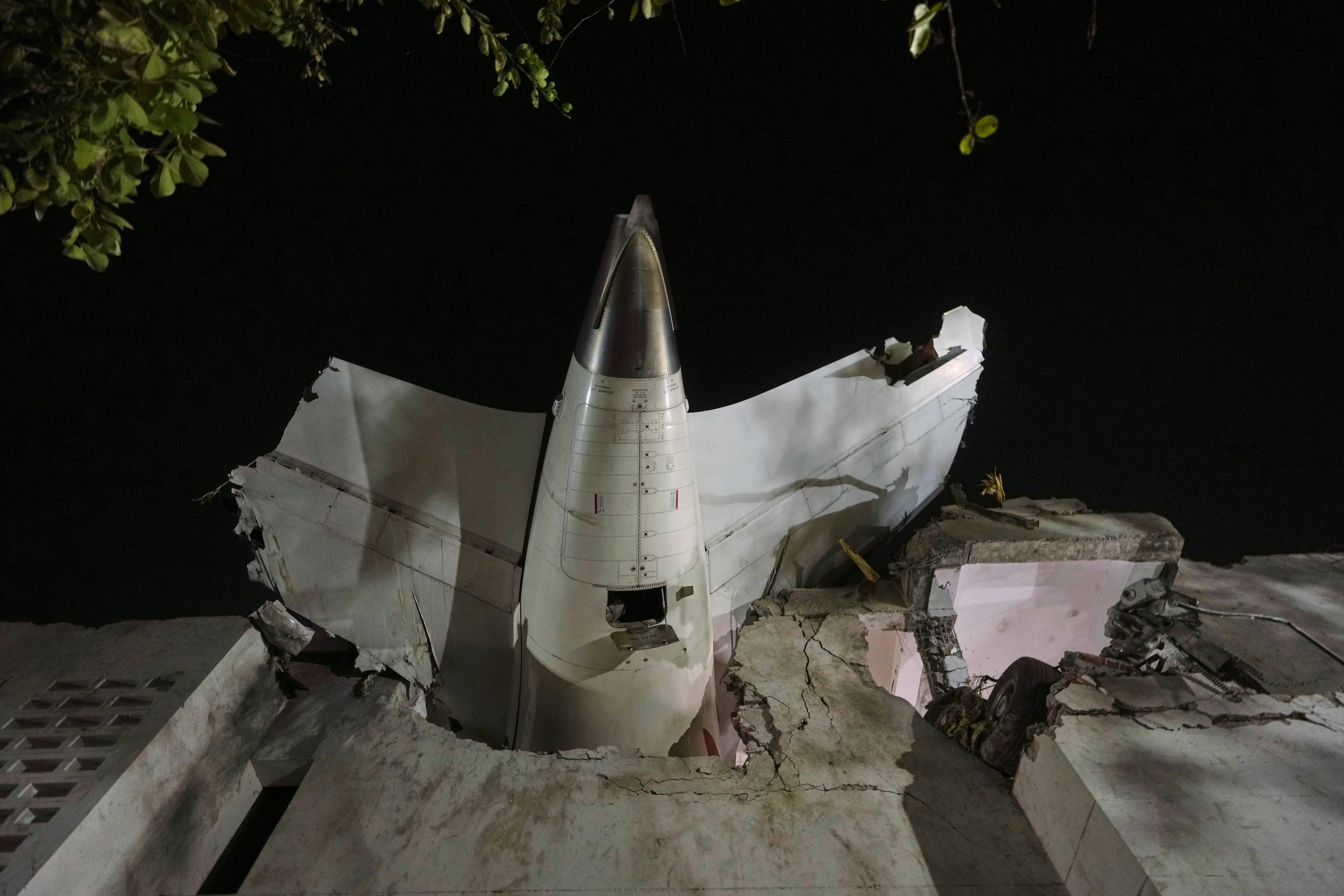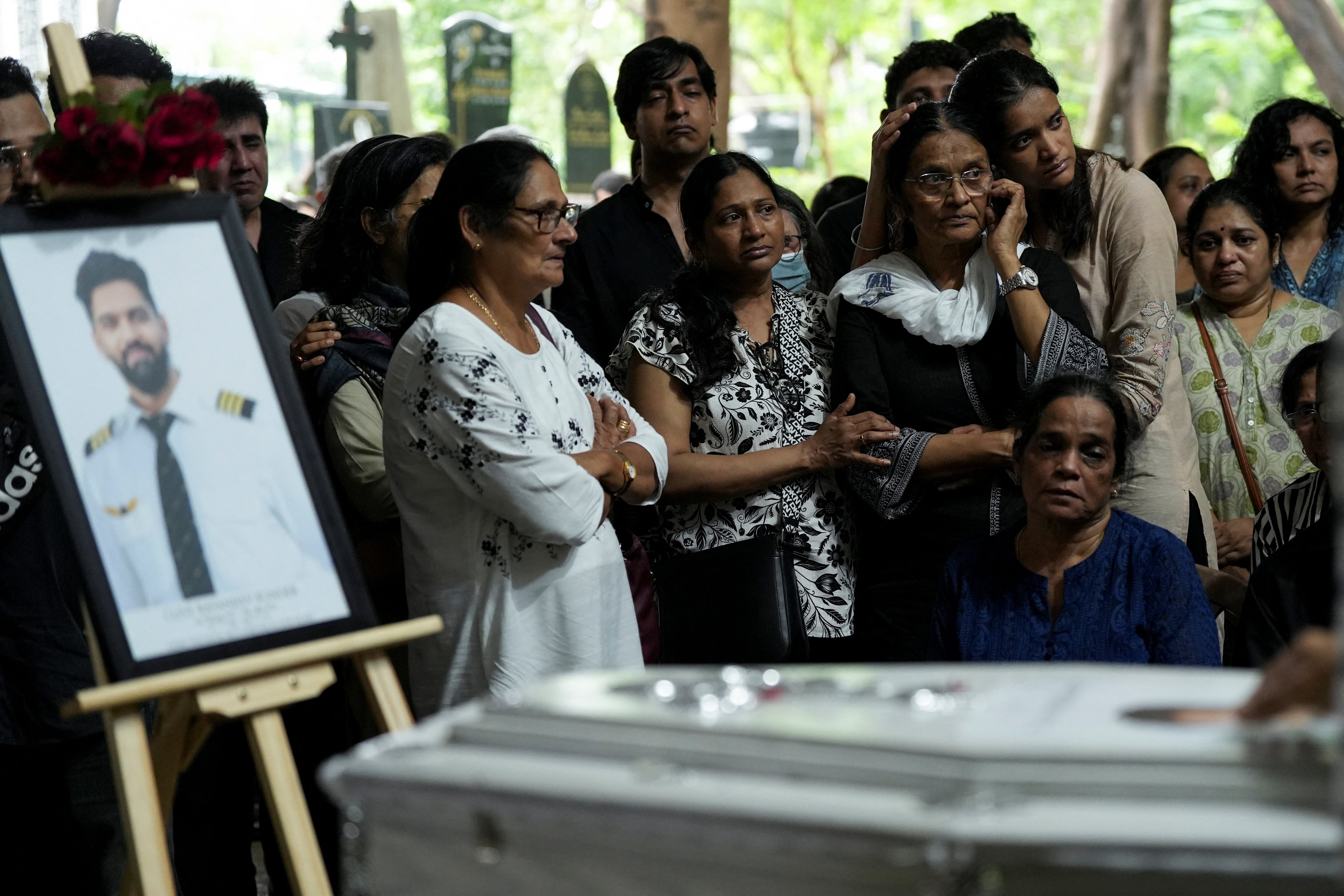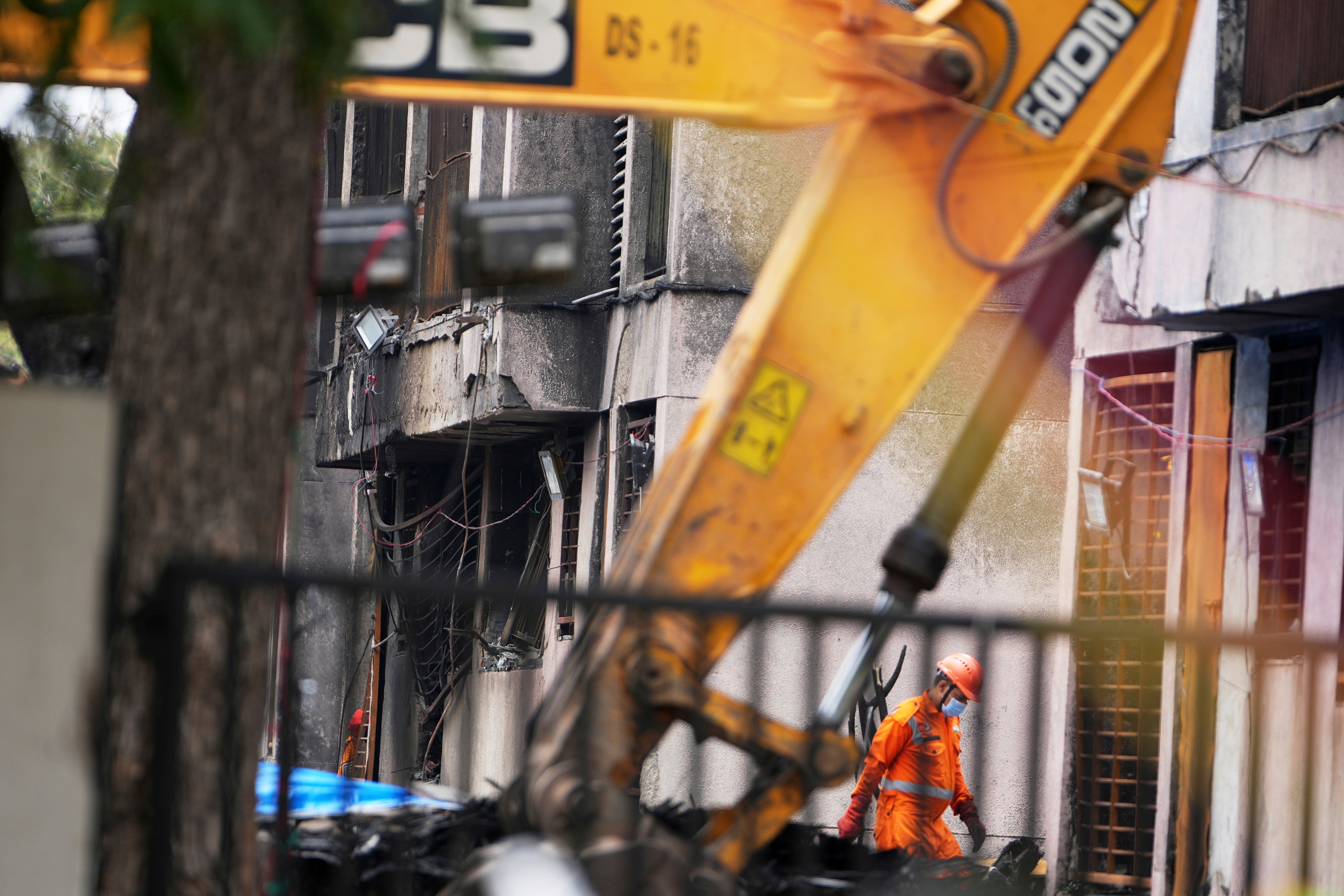A lawyer representing families of those killed in June’s devastating Air India crash has dismissed claims that the pilots may have deliberately or mistakenly shut off fuel controls before the aircraft plunged into a building, killing 260 people.
Mike Andrews, who is pursuing lawsuits against Boeing on behalf of more than 100 families, said in an interview with The Independent that the suggestion of “self-sabotage” or gross pilot error is not only unsupported by evidence but also unjust to the dead.
Flight AI171, a Boeing 787-8 Dreamliner operated by Air India, took off from Ahmedabad on 12 June bound for London. Less than two minutes into the journey, the aircraft lost power, veered off course and struck a medical college building near the runway.
All 229 passengers, 12 crew members and 19 people on the ground were killed. Among the victims were 52 British citizens. Only one man, Leicester resident Vishwashkumar Ramesh, survived after being thrown clear of the fuselage.
It was the first fatal crash involving the Dreamliner, Boeing’s flagship long-haul aircraft introduced in 2011 and hailed for its fuel efficiency and modern design. The carbon-fibre twin-engined 787 was designed partly as a replacement for Boeing’s veteran 767 – but also to introduce passenger-friendly benefits such as larger windows and higher cabin pressure.

The Dreamliner was also friendly to airlines’ bottom lines, burning about 20 per cent less fuel than the 767, and allowed airlines’ network planners to dream of ultra-long routes.
But Mr Andrews argues that the aircraft had been dogged by technical concerns, particularly involving its potable water system – that supplies safe, drinkable water for passengers and crew – and its proximity to sensitive electronics.
He pointed to a trail of Boeing bulletins to airlines dating back years and recent regulatory warnings from the US Federal Aviation Administration (FAA), all raising alarms over water leaks.

“Going back to 2016, 2017 and 2018 there were bulletins to air carriers in the United States to perform waterproofing maintenance,” Mr Andrews said.
“In particular, it speaks to couplings that join water lines underneath lavatories and galley areas. I’ve purchased some of these couplings myself – they’re simple clamshell devices that hold two lines together.
“But the way the final shroud is fitted can loosen the latch, and over time that leads to leaks. We know from FAA notices and directives that water has been found on 787s leaking into equipment bays, and in some cases equipment had to be replaced.”
The compartment he refers to is the aircraft’s electronics equipment bay, or EE bay. It sits beneath the cabin floor and houses the computers that control almost every aspect of the flight, including the full authority digital engine control, known as Fadec.

The Fadec is essentially the aircraft’s engine brain. Unlike older jets, where pilots manually controlled fuel flow, modern engines depend on this computer to regulate thrust, fuel injection and performance.
Fadec is a sophisticated digital computer system in aircraft that automatically controls all aspects of engine performance by receiving data from sensors, calculating optimal settings, and adjusting fuel flow and other engine parameters to maximise efficiency and performance while ensuring safety.
According to the FAA, “if the Fadec fails, the engine fails”.

Mr Andrews said a water leak does not have to destroy equipment outright to be dangerous. “Even if it doesn’t ruin the component, it can trigger a reset. And that cascade can initiate an engine shutdown. In Ahmedabad, we saw both engines shut down or lose thrust within seconds – that is extraordinarily unlikely without a common cause. Water reaching those systems is one plausible explanation.”
The FAA itself highlighted the risk only weeks before the crash.
On 14 May, the regulator issued an Airworthiness Directive – an order that requires mandatory checks – warning that “water leakage from the potable water system due to improperly installed waterline couplings” had been reported, and that such leaks could cause “equipment in the EE bays to become wet resulting in an electrical short and potential loss of system functions essential for safe flight”.

The directive ordered inspections of Dreamliners for missing sealant and moisture barriers.
Yet Mr Andrews said the directive lacked urgency.
“My understanding is that this directive wasn’t due to take effect until about six days after our crash. Obviously there’s insufficient urgency when something has apparently been known by Boeing for years. Aviation safety affects everyone.
“And one concern is that the FAA has authority inside the United States, but outside the US things often lose urgency, whether it’s political protection or simply a breakdown in communication.”
The Independent has reached out to Boeing seeking a response on the allegations.
India’s Aircraft Accident Investigation Bureau has floated a different possibility.
A preliminary report from India’s Aircraft Accident Investigation Bureau, published in July, said both of the plane’s fuel switches moved to the “cut-off” position “immediately” after take-off, stopping fuel supply to the engine.
“In the cockpit voice recording, one of the pilots is heard asking the other why did he cut-off. The other pilot responded that he did not do so,” the report read.
That has fuelled theories of self-sabotage by pilots, or that one of them mistakenly switched the fuel supply off.
Mr Andrews cautioned against drawing such a conclusion.

“We don’t know what that exchange refers to. If there has been a reset of the Fadec or the electrical bus – essentially the main breaker system – then in that moment one pilot’s panel could shut down. Is it possible he was saying, ‘Why did you turn it off?’ about his own controls? We don’t know. That’s the point. It is premature conjecture to solely blame the pilots when we don’t yet have all the data.”
He said such insinuations are deeply damaging for families.
“The way the preliminary report was issued, the way it leaves out critical data, the way it insinuates rather than calls out what happened, has caused our clients to all question transparency.
“They are not convinced by the pilot error narrative. And I have cautioned them all to be patient, because it is just as wrong to blame the pilots without information as it would be for me to unequivocally blame Boeing without data. What we are saying is: wait for the full evidence.”

Part of that evidence may come from whistleblowers. Mr Andrews confirmed that four individuals with what he described as “vital technical and engineering information” have contacted his team since the crash.
While he declined to identify their backgrounds, he said they included individuals from “different layers of the aerospace industry”.
“That doesn’t necessarily mean they are inside Boeing,” he said. “The aviation industry has layers – subcontractors, maintenance engineers, suppliers. We’ve been contacted by people who’ve done their own analysis as well as people with direct aerospace experience. What’s important is to keep our field of view broad so we don’t miss something by focusing too early on one theory.”
While Mr Andrews confirmed that they have not yet filed a lawsuit in court, his legal team is gathering evidence and has filed a Freedom of Information Act (FOIA) request in the United States to obtain data from the flight recorders.
The Indian authorities have so far said they intend to keep the analysis within India.
There are also other concerns. Mr Andrews said his team is curious about whether leaks could have affected the lithium-ion batteries located in the tail section of the Dreamliner.

Those batteries, already known for their susceptibility to “thermal runaway” – an uncontrollable heating event – could pose additional hazards if exposed to moisture. “We’re curious whether water leaking into that area could trigger problems,” he said.
The sole survivor’s account has also shaped Mr Andrews’ thinking. In an interview with the BBC, he said that lights inside the aircraft “started flickering” moments after take off. Within five to 10 seconds of being airborne, it felt like the plane was “stuck in the air”.
“The lights started flickering green and white…suddenly [we] slammed into a building and exploded,” he said.
Mr Andrews said the accounts of lights flashing and changing colour “are all data points suggesting electrical issues”.
“Once we receive the timeline for why the ram air turbine deployed – a small emergency windmill that only comes out in certain electrical failures – we’ll be in a better position to know what precipitated this.”
For families, the legal battle is about more than money.

Mr Andrews said they have two overriding goals: “One is to learn what happened, why it happened, how it happened. The second is to prevent this from ever happening again. Every client has told us that. They want transparency and accountability. They want to know whether this tragedy could have been avoided.”
Some are also facing frustration regarding compensation from Air India. Mr Andrews said disputes within families over entitlements, combined with delays, have left some with “no answers, no compensation, no nothing – just a loss”.
As lawsuits take shape, Mr Andrews said manufacturers must not be allowed to push blame downstream. “If a coupling is defective, that’s on the subcomponent maker. If Boeing sells a completed aircraft that allows water to drip into flight computers, that’s on Boeing. What they cannot do is release defective equipment and expect airlines to engineer their way around it. That is not right.”
He said reforms will depend on the eventual findings, but the broader issue is oversight. The Dreamliner, like other US aircraft, was partly certified under a system known as ODA, where Boeing itself had authority to approve designs on the FAA’s behalf.
“A big question is whether this should have been caught during certification,” Mr Andrews said asking, if Boeing knew of leaks, “why wasn’t there more urgency about water dripping into flight computers? That to me is a serious issue.”
The Independent put these concerns to Boeing in a detailed questionnaire. The airline said it would “defer to the AAIB to provide information about [Flight] AI171”, citing international protocols around crashes.
For now, families are still waiting. Mr Andrews said their patience is not infinite. “They’ve earned the right to know what happened here and each of them… wants to prevent this from ever happening to any other family.”





